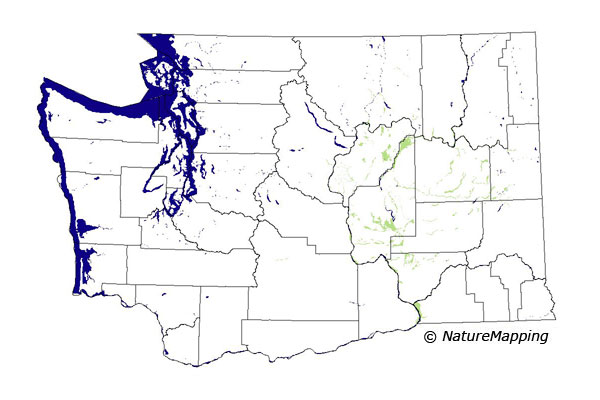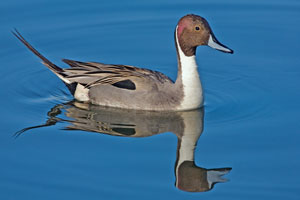


Pintail or Northern Pintail (Anas acuta) Description: The Northern Pintail has a distinctive shape: very long-necked, small-headed and pointed-tailed. The male has a rich brown head with a white line running up the back of the neck from the breast. The body is gray above and on the flanks and the feet are gray. The long black tail feathers of the male help distinguish it in flight as they add up to 4 inches to it's length. 
The bill is gray-blue with a black strip down middle (left photo). The female has a tan head and neck. The female's body plumage is mottled tan with a dark brown back and body plumage, paler on belly. Her bill is gray-blue with small black spots and has gray feet (right photo). Length: 18-26 inches
Calls:
These ducks are seldom vocal. Male utters a double-toned whistle. Female has a low quack. Range / Habitat: Wintering from as far south as Panama, their migration routes take them as far north as Alaska and the Great Lakes. It is the most widely distributed North American duck as it winters primarily in California, Texas, Louisiana, and along both coasts of Mexico.
Click the range map to learn more about the distribution of Northern Pintails in Washington. Diet: Aquatic plants, seeds, grass, small aquatic animals, insects. In winter, often feeds in grain fields. A surface feeding dabbling duck. Long necks enable them to reach deeper than other dabbling ducks for seeds, roots and tubers of water plants. Did you know?
Animal silhouettes available to purchase » Photos: Natures Pics Home | About Us | How to Participate | Biodiversity Modules | Projects | Maps | News | Resources |